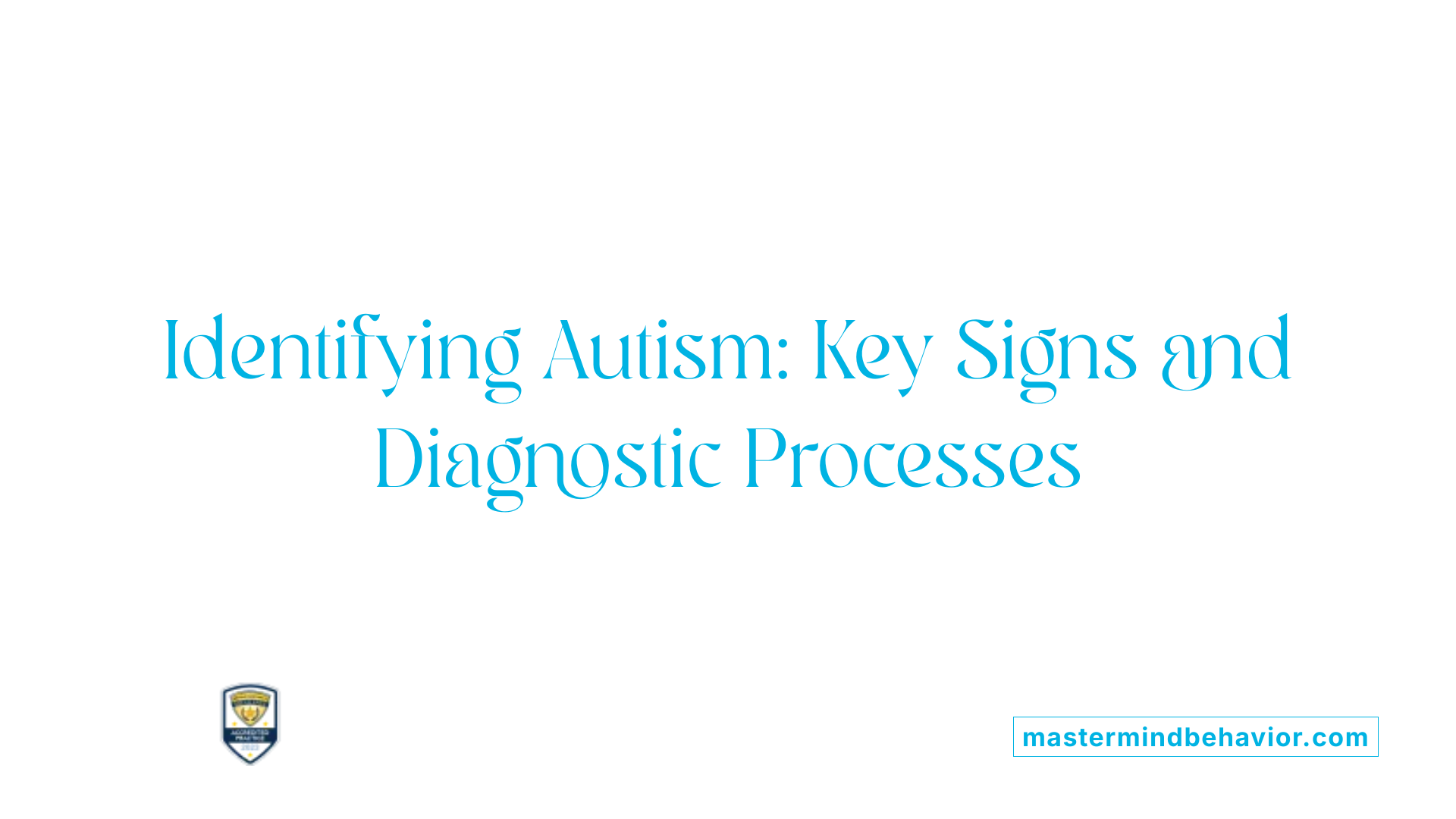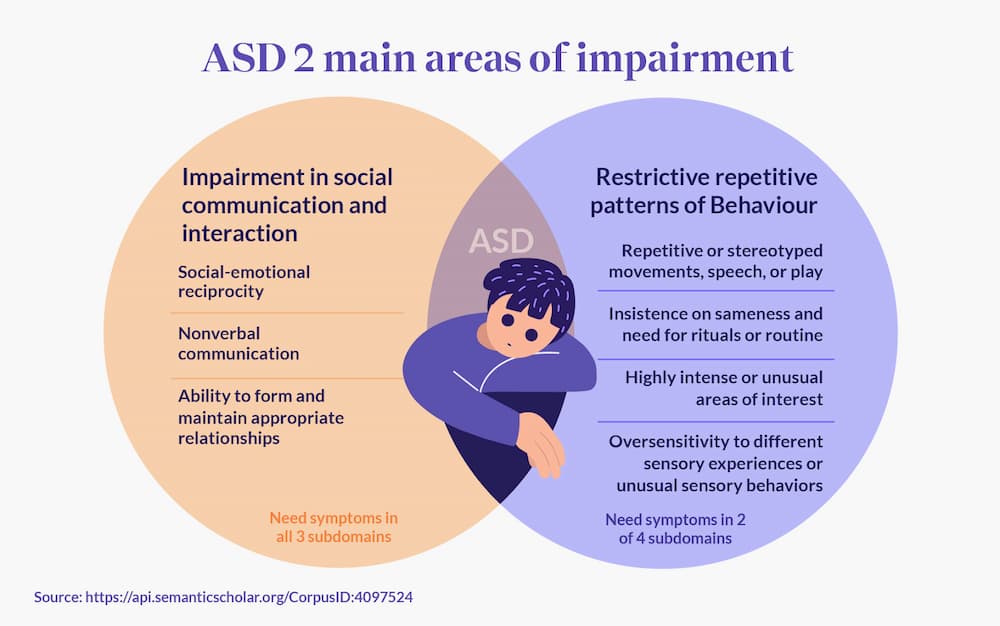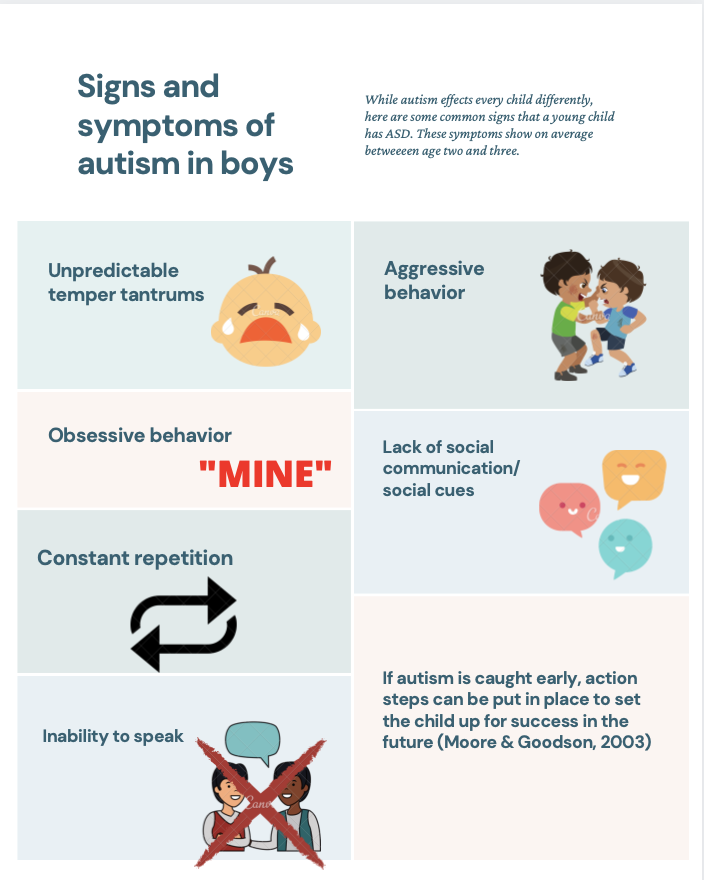Recognizing the Effect of Behavioral Autism on Life and Social Communications
You may not recognize just how deeply behavioral autism affects day-to-day live and social interactions. Individuals on the spectrum commonly browse a globe filled up with communication difficulties and sensory overload. These obstacles can result in irritation and seclusion, influencing their connections and general health. Recognizing these subtleties is crucial for cultivating helpful environments. What methods can we carry out to develop more meaningful links and inclusive spaces? The solutions might surprise you.
Defining Behavior Autism and Its Qualities
Behavior autism, usually referred to as autism range condition (ASD), includes a variety of problems characterized by difficulties in social communication, interaction, and recurring habits. You might observe that people with ASD often battle to interpret social signs, which can result in misunderstandings in discussions. They may locate it difficult to establish eye get in touch with or take part in small talk, making social scenarios really feel overwhelming.
Communication troubles can materialize in various methods, from postponed speech growth to a preference for utilizing less words. By identifying these traits, you can foster an environment that promotes acceptance and encourages effective communication, helping people with autism grow in their day-to-day interactions.
The Spectrum of Autism: Comprehending Irregularity in Behavior
Autism spectrum problem (ASD) isn't a one-size-fits-all medical diagnosis; it varies extensively among individuals. You may experience people that are extremely verbal and engage easily in conversations, while others might prefer solitary tasks or connect non-verbally.
In addition, the means individuals with ASD reply to sensory input can vary greatly; some could be bewildered by loud noises or bright lights, whereas others grow in boosting environments. The spectrum also consists of differences in social communications; some people may struggle to analyze social cues, while others browse social settings with loved one ease. Understanding this irregularity is crucial, as it assists you value everyone's one-of-a-kind experience and tailor assistance to their certain needs, fostering an extra inclusive setting for everybody.
Communication Difficulties Encountered by Individuals With Autism
When you connect with people on the autism range, you may notice their special communication challenges. They often deal with troubles with both nonverbal and verbal cues, which can influence their social interactions. Recognizing these obstacles is vital for cultivating much better links and support.

Verbal Communication Troubles
Lots of people on the autism spectrum experience verbal communication problems that can substantially influence their everyday interactions. You could locate it challenging to share your ideas, sensations, or needs clearly. This can cause disappointment for both you and those around you, as misunderstandings take place. You may deal with initiating discussions, preserving a subject, or comprehending subtleties in speech. Frequently, you may prefer using simple language or repetitive phrases, which can restrict your ability to take part in deeper discussions. Your tone, rate, or quantity may not align with social expectations, triggering others to misinterpret your purposes. Identifying these obstacles can assist you and your assistance network establish methods to boost interaction and promote much better connections with others in your life.
Nonverbal Communication Obstacles
Verbal communication isn't the only obstacle individuals on the autism range face; nonverbal communication obstacles can be simply as considerable. These obstacles can lead to misconceptions or misinterpretations of social cues, making communications really feel overwhelming or complicated. By dealing with nonverbal interaction, you can find techniques to boost your social experiences and improve your general high quality of life.
Social Communication Effects
Social interactions can commonly really feel frustrating due to the unique interaction obstacles dealt with by individuals with autism. Acknowledging these difficulties can assist you find approaches to improve communication, such as exercising social skills in safe setups or utilizing visual help. Comprehending your requirements permits you to navigate additional resources social communications with higher self-confidence and ease.
Social Communication and Relationship Structure in Autism
While building partnerships can be testing for individuals with autism, comprehending their distinct viewpoints and interaction styles can promote meaningful connections. You could notice that lots of people on the range choose straight communication and might fight with social hints or tiny talk. By being uncomplicated in your interactions, you can aid produce a setting where they really feel comfortable.
Take the time to pay attention and observe how they express themselves. This understanding can assist you in steering discussions better. Involving in shared rate of interests can also act as a bridge to deeper links. Whether it's a pastime, a favorite show, or a mutual enthusiasm, these usual threads can open up doors to relationship.
Daily Life Regimen: Navigating Obstacles and Approaches
Navigating day-to-day live regimens can be specifically testing for people with autism, especially when unexpected changes occur. You may locate convenience in having an organized routine, as it helps you anticipate what's following. It's normal to really feel nervous or overwhelmed when disturbances happen. To browse these challenges, think about carrying out aesthetic schedules or lists. These devices can offer clarity and confidence.
Establishing a regimen that includes sensory breaks can additionally be helpful. You can prepare brief breaks throughout your day to recharge. It's important to interact with those around you, allowing them understand your requirements and preferences. This aids produce an understanding environment.
Last but not least, practice mindfulness methods to take care of tension and stress and anxiety. Simple breathing exercises or basing methods can make a considerable distinction. By integrating these methods, you can improve your daily routine and reduce disruptions, making life feel extra convenient.
Toughness and Abilities of People on the Autism Spectrum
Recognizing day-to-day life routines is simply one element of the autism experience. Several people on the autism range have impressive toughness and capabilities that establish them apart.
Furthermore, your memory skills commonly radiate, particularly in locations of rate of interest. Autism Spectrum Therapies. This propensity for keeping info can make you an important resource in fields like technology, science, or art. You might likewise display strong aesthetic reasoning, enabling you to picture complicated principles and resolve troubles artistically
Additionally, your distinct perspective on the globe can cultivate compassion and understanding in others, enriching social communications. Accepting these staminas not just increases your self-confidence yet likewise aids others appreciate the varied skills you bring to the table.
Developing Inclusive Environments for People With Autism
Creating inclusive environments for people with autism begins with creating sensory-friendly spaces that accommodate their unique demands. You can likewise foster opportunities for social interaction, aiding to develop friendships and connections. By making these changes, you'll add to an extra welcoming ambience for everybody.
Creating Sensory-Friendly Spaces
While making sensory-friendly areas, it's vital to show on the distinct requirements of individuals with autism. Include quiet areas where people can charge and pull away when bewildered. Include visual timetables or clear signs to assist individuals browse the room weblink with confidence.
Advertising Social Interaction Opportunities
Creating sensory-friendly spaces not just addresses specific convenience however additionally sets the phase for significant social interactions among individuals with autism. Encourage peer mentoring, coupling individuals with autism Resources with encouraging peers who can assist them with social scenarios. By carrying out these techniques, you can improve social opportunities, helping people with autism build relationships and reinforce their social skills in a secure, welcoming environment.

Frequently Asked Concerns
How Can Buddies Assistance A Person With Behavioral Autism?
You can sustain a buddy with behavioral autism by being individual, paying attention proactively, and valuing their limits. Take part in tasks they take pleasure in, communicate honestly, and produce a comfy environment where they really feel valued and recognized.
What Resources Are Readily Available for Parents of Children With Autism?
You can explore numerous sources for moms and dads of youngsters with autism, consisting of support system, educational websites, and local community solutions. Linking with various other parents can also provide important insights and shared experiences to aid navigate difficulties.
Can Behavioral Autism Change With Time?

Yes, behavior autism can change over time. You could discover changes in communication, social abilities, and behavior as your youngster grows. Early treatment and support usually play essential roles in these developing changes.
Just How Do Sensory Sensitivities Influence Life?
Sensory level of sensitivities can make day-to-day experiences overwhelming. You might battle with bright lights or loud sounds, causing stress or avoidance. Locating environments that suit your needs can considerably boost your comfort and total life.
What Are Typical Misconceptions Regarding Behavioral Autism?
You could think behavior autism only affects communication skills, however it's even more facility. Several presume people do not have compassion or knowledge, which isn't true. Understanding these misconceptions helps foster acceptance and support for those on the spectrum.
Behavior autism, often referred to as autism range disorder (ASD), encompasses a variety of problems identified by challenges in social communication, communication, and repetitive habits.Social communications can often feel overwhelming due to the one-of-a-kind interaction challenges faced by individuals with autism.Designing sensory-friendly rooms not only addresses individual comfort but additionally establishes the phase for purposeful social communications amongst individuals with autism. Motivate peer mentoring, pairing people with autism with encouraging peers who can assist them via social scenarios. By executing these methods, you can enhance social possibilities, aiding people with autism construct relationships and enhance their social skills in a safe, welcoming environment.